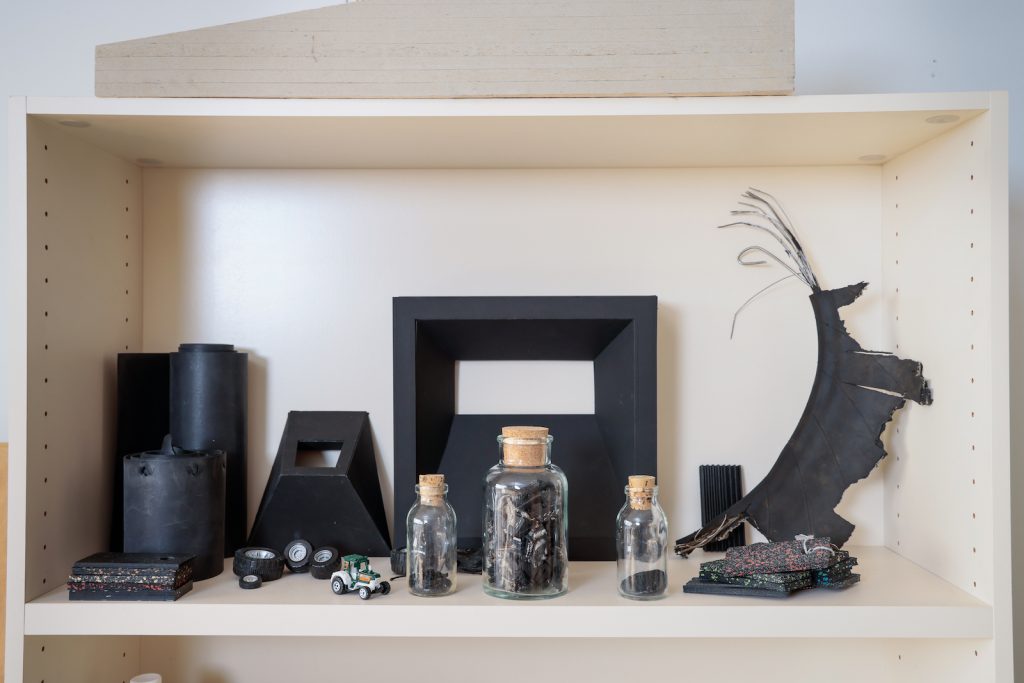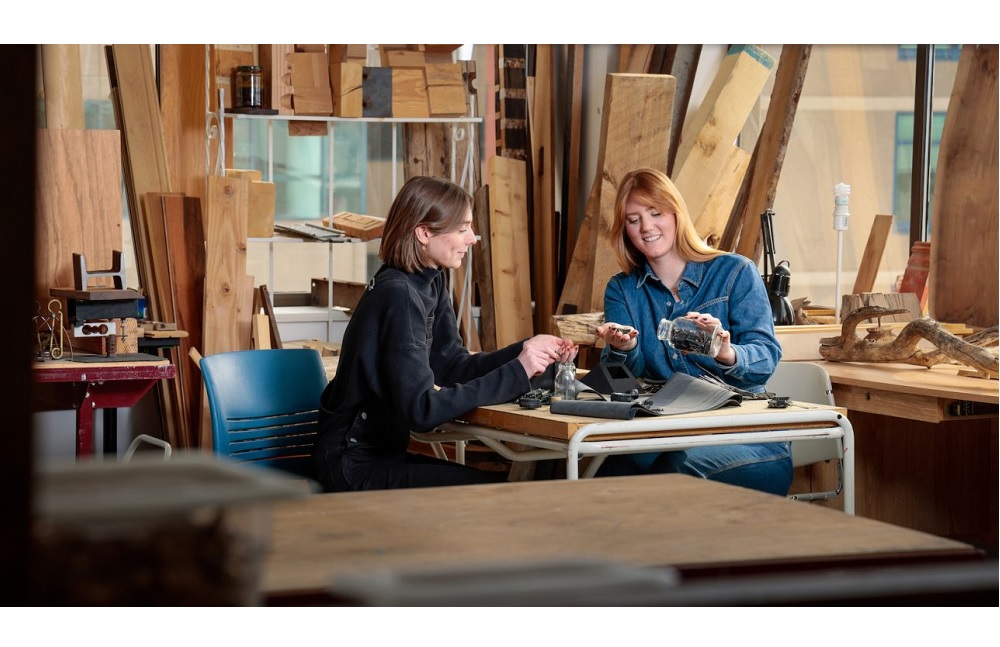If the rubber recycling sector is going to change attitudes and approaches to recycled materials in construction, it needs to start at the grassroots of design and have architects involved and aware of the materials available.
Olivia Collier and Maslin Mellick, both 2022 master of architecture graduates at CU Denver, took home the Colorado Green Building Guild (CGBG) Student Project of the Year for the work they did in a studio class led by Professor of Architecture Julee Herdt. The class was tasked with creating a “Clean-Tech Manufacturing Facility for Sustainable Building Products.”
Both agree that they wanted to work on a project with a meaningful impact. So, they decided to look for beauty and inspiration in the local landfills. “Jokingly, our team’s name was Junk Girls,” Collier said. “We were doing a lot of hands-on research in trash.” Through Colorado Tyre Recycling (CTR), they learned that about 80 million used tyres currently reside nearby in Hudson at a tyre monofil known as “Tyre Mountain.”
After researching the topic, the team realised there was work to be done in two major areas. The first: advocating for policy change involving tyre waste. The second: incentivising another end-market use for the tyres. Their solution—which involves devulcanisation, a process of recycling rubber by breaking down the toxins and sulphur components—creates a new building material with all the positive properties of rubber without the toxic off-gassing.

Their invention, coined “Tyre Tiles,” would come in two styles: “Solid” and “Void.” Solid could be used in colder climates for wall assembly that would provide thermal, waterproofing, and acoustic benefits. Void, which includes gaps and spaces, would be used in warmer climates, for breathable wall assembly and solar shading.
Aside from the physical properties of the tyres, Collier and Mellick wanted to design something that would be aesthetically pleasing. They hope that because the tiles would be on the exteriors of buildings, they would inspire curiosity and help educate the public about the potential of a closed loop for not just tires, but waste management. “Recycling waste tyres is so much bigger than just our project,” Collier said. “It could be utilised in so many ways in the building industry, specifically for architecture where there are already a lot of existing uses and rubber in buildings.”
Herdt encouraged Collier and Mellick to submit their tile and manufacturing facility design to CGBG. Earlier this year, they attended an awards ceremony where they networked with industry professionals and educated their peers. “I feel really proud of what we developed,” Mellick said. “It’s exciting to see that our work is inspiring other people and that’s really rewarding.”
Source: Kristen Goosen, University Communications




















